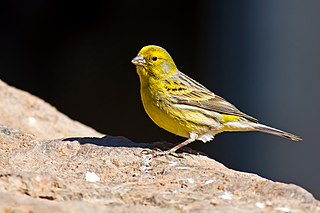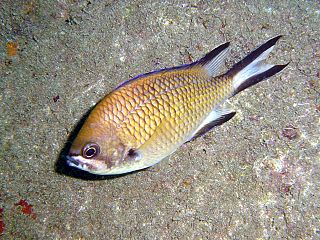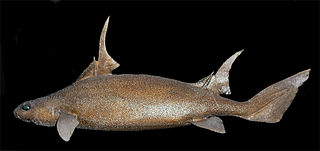 W
WLabrus is a genus of wrasses native to the eastern Atlantic Ocean into the Mediterranean and Black seas.
 W
WThe cardinalfish, also known as the Mediterranean cardinalfish or king of the mullets, is a species in the family of Apogonidae (cardinalfishes). It is widely distributed in the Mediterranean and along the warm temperate and tropical eastern Atlantic coasts from Portugal south to the Gulf of Guinea.
 W
WThe Burro da Ilha Graciosa or Burro Anão da Graciosa is a breed of small domestic donkey endemic to the island of Graciosa, in the North Atlantic archipelago of the Azores, which are an autonomous region of Portugal. It is critically endangered, but is not officially recognised or reported to the DAD-IS database of the FAO. Efforts are being made to obtain official recognition and protection of the breed.
 W
WThe Canary damsel is a species of marine fish of the family Pomacentridae. It lives primary in shallow, subtropical waters of the Atlantic Ocean, and is sometimes also known as the Cape Verde gregory, which is also a common name of Stegastes imbricatus.
 W
WThe Atlantic canary, known worldwide simply as the wild canary and also called the island canary, common canary, or canary, is a small passerine bird belonging to the genus Serinus in the finch family, Fringillidae. It is native to the Canary Islands, the Azores, and Madeira. Wild birds are mostly yellow-green, with brownish streaking on the back. The species is common in captivity and a number of colour varieties have been bred.
 W
WThe Azores chromis or Atlantic chromis is a species of damselfish from the family Pomacentridae which is found in the Macaronesian Islands of the temperate eastern Atlantic Ocean and has been reported from coastal regions of western Africa.
 W
WThe barred hogfish is a species of wrasse native to the eastern Atlantic Ocean, where it occurs around the Macaronesian island groups of the Azores, Madeira, the Canary Islands and Cape Verde. This species occurs on rocky reefs at depths of 20 to 200 m. It can reach a length of 43 cm (17 in), though most do not exceed 30 cm (12 in). It is of minor importance to local commercial fisheries. This species was formally described as Labrus scrofa in 1839 by Achille Valenciennes with the type locality given as the Cape Verde Islands.
 W
WThe rock-pool blenny is a species of combtooth blenny found in the eastern central Atlantic Ocean. This species reaches a length of 12 centimetres (4.7 in) SL.
 W
WThe sailfin roughshark is a species of dogfish shark in the family Oxynotidae, found in the eastern North Atlantic from Scotland to Senegal between latitudes 61°N and 11°N, at depths of between 265 and 720 m. Its length is up to 1.2 m (3.9 ft).
 W
WTaeniotes scalatus is a species of flat-faced longhorn beetle in the subfamily Lamiinae of the family Cerambycidae.
 W
WThe axillary wrasse is a species of wrasse native to the eastern Atlantic Ocean from the Azores and Madeira to the coasts of Portugal to Morocco and then along the coastal waters of the Mediterranean Sea. This species can be found in eelgrass beds at depths from 1 to 50 m. It can reach 18 cm (7.1 in) in standard length, though most do not exceed 12 cm (4.7 in). This species is important to local peoples as a food fish and is also sought as a game fish. It can also be found in the aquarium trade.
 W
WThe corkwing wrasse is a species of wrasse native to the eastern Atlantic Ocean from Norway to Morocco and out to the Azores, as well as being found in the Mediterranean Sea and the Adriatic Sea. This species can be found in areas of rock or eelgrass at depths from 1 to 30 m.